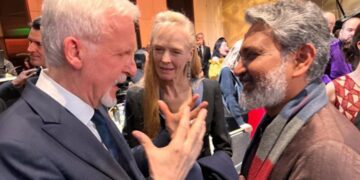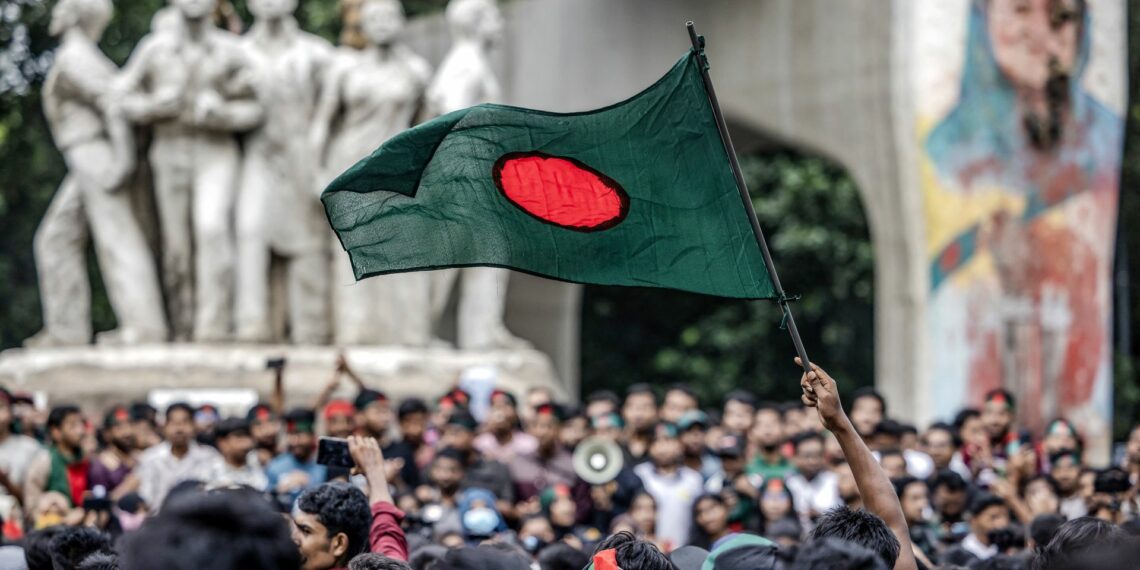Most lay observers of the two-nation theory that finally led to the partition of India in 1947 are of the opinion that it was Md. Ali Jinnah who laid the sprouts for the formation of Pakistan. But in reality, it was Choudhry Rahmat Ali, a Gorsi clansman from the Gujjar community of Hoshiarpur, Punjab who first coined the word Pakistan (without the letter “i”) in a pamphlet titled Now or Never; Are We to Live or Perish Forever? on 28 January 1933 in London.
The concept of the two-nation theory dates back to 1887 when Sir Syed Ahmad Khan, founder of the Aligarh Muslim University, propounded that Hindus and Muslims constitute two different nations. Later-day proponents of the two-nation theory, presently on the upswing, base their argument that India had always been nurtured by fundamental differences in the field of culture, language, politics, economic and societal. The variances—specious at least to me—are reportedly between the two communities, Hindus and Muslims, which have lived cheek-by-jowl for centuries.
It would be of interest to readers to learn that debate continues to rage about the two-nation theory, about us-and-them, long after the concept separated a sub-continent. Indeed, recent developments in the region have forcefully brought the issue onto centre-stage, and are, unfortunately, becoming more accentuated by the day. I am also of the opinion that the last word about the matter is yet to be voiced.
Some months ago, during an interview of mine conducted by Maroof Raza on his celebrated TV talk show Latitude, Raza and I discussed India-Bhutan ties in the backdrop of China’s shadow. I lamented that India’s “Neighbourhood First” policy needs serious reworking. Raza responded by saying something rather interesting which drove home the point about the ineptitude of India’s foreign office. He said, “India has a diplomatic corps which is smaller even than that of Singapore but we are trying to punch in the heavyweight category of world’s geopolitics.”
He, of course, stated it in the context of the need for India to engage more seriously with its neighbourhood. He is, as I am, apprehensive that India—by being big-brotherly—might alienate even Bhutan, the only friend and ally that India has in South Asia. But even as the dialogue was, primarily, about the manner in which China was making robust inroads into the Himalayan kingdom and my analysis that the “generational shift” that was taking place in Bhutan may make it more open to Chinese socio-economic overtures, the fact that Raza sought to sagely comment on India’s inability to maintain a “Neighbourhood First” policy in correct stead was well-timed. Indeed, in recent years there has been considerable talk that India was alienating all its neighbours, and that the much tom-tommed “Neighbourhood First” policy has been an abysmal failure.
The television conversation with Raza was aired before the putsch in Bangladesh that ousted Sheikh Hasina. It is now being wondered whether India could have done anything to prevent the regime change. Indeed, the question most observers are asking is whether the Indian intelligence had prior knowledge of what was brewing in Dhaka. 2024 looks pitifully similar to the subterfuges of 1975 when Sheikh Mujibur Rahman was assassinated. New Delhi had, to the best of my knowledge, no intelligence about the plot against Sheikh Hasina’s father. History has rerun an interesting course.
In any event, India has lost considerable ground in its eastern seaboard as a result of the developments in Bangladesh. The fact that Pakistan is cosying up to the illegitimate dispensation in the erstwhile East Pakistan is not helping matters for India, and it is wondered what rearguard action is being taken to counter the emerging “anti-India nexus.” This is despite the fact that very important policy planners in New Delhi have told me that “it is working to a plan.”
But today it is time to re-read the pages of the “Legacy of Blood”.
It is true that Bangladesh’s relationship with India has waxed and waned like irregular lunar cycles. Therefore, even as the honeymoon period that characterized the relationship between India and Bangladesh after the eastern wing of Pakistan was liberated with active Indian help ended with the assassination of Sheikh Mujibur Rahman on 15 August 1975, the return to power of the Bangabandhu’s daughter, Sheikh Hasina after several years of “Islam backed Barrack Politics” witnessed the return to a pro-India era.
History that was sought to be erased about Indian support to the War of Liberation was corrected and Hasina decreed that India’s role was indelibly etched in the pages of the historic deliverance. Hasina also ascertained that Indian insurgent leaders who were billeting in Bangladesh were apprehended and handed over to India, determining thereby that at least a modicum of peace returned to the restive North East. After all, the erstwhile East Pakistan had become a virtual safe haven and transit point to places such as Karachi and Batrasi in Pak-Occupied Kashmir for groups such as the ULFA and the Assamese Muslim Fundamentalist Organisations. India and Bangladesh had entered a period of harmony.
The article began by holding forth on the two-nation theory and about Muslims and Hindus. The present, in my opinion, is an opportunity to test the theory.
Bangladesh came into being after an almost year-long war of liberation. Pakistan had let loose a reign of terror in its eastern wing. “Operation Searchlight”, a campaign of carnage, rape and torture was unleashed against its own citizens by the western wing. Indeed, Sheikh Hasina’s government had sought to declare 25 March as “Genocide Day”. However, on hindsight, it is wondered whether Bangladesh which had come into existence on the strength of Bengali socio-linguistic and cultural identity had actually negated the two-nation theory. Or, was Islamism, a closet weapon system, that was temporarily kept aside for the sake of political expedience. After all, it is not as if there were no Islamist radicals in Bangladesh before it severed itself from Pakistan. The name of Gholam Azam and the Razakars are well known for the manner in which they combatted the momentary tide of secular Bengali nationalism.
The enigma that continues to disturb students of sub-continental politics such as me, is the fact there continues to be a constituency in Bangladesh that is unwavering to the cause of Bengali linguistic and socio-culture identity. The population that espouses such strong sentiments is the ready and capable foil to the advances of anti-India forces. It does not require flamboyant imagination to comprehend that if properly cultivated and empowered such an expanse—however small—would rally behind India and its flagging standards in a country that is being overtaken by sinister designs. After all the group which had been steadfast to Bengali nationalism was also among the ones that responded with immense courage during one of the Poila Boisakh (Bengali New Year) celebrations a couple of years ago when Islamists threatened them against performing traditional Bengali Hindu practices such as sporting “teep” (bindi or a small coloured mark that is worn between a lady’s eyebrows).
Sadhana Ahmed, a celebrated playwright warned the threatening radicals by proclaiming in her Facebook BeshiHoichoi Korbi Toh Surjo Take TeepBanayPorbo (Don’t shout too much; Otherwise, I will wear the sun itself as a Teep)!” But the problem with the Babus of New Delhi is that they are neither willing to read history nor do they find significance when aspects of import (such as the” teep” episode, as aforesaid!) are made known to them.
But there is another side of the story. It is also true that a generation of Islamist radicals of Bangladesh drew inspiration from the successes of the Islamist movement in Afghanistan during Taliban-I and the activities of al-Qaeda.
Bangladesh, therefore, is a country that possesses curious innards of its own. Notwithstanding the close relationship which it “had” with India (until the illegal takeover by an unholy cabal), there were various factors that have led to its evolution as an independent state. Indeed, it was important for Bangladesh immediately after its formation to steel itself as a nation that is not dependent on India.
Writing about this aspect, former Indian foreign secretary and national security adviser, J.N. Dixit has analysed Sheikh Mujib by stating that “(Mujib) was also conscious that if Bangladesh earned sufficient recognition from important countries and developed the minimum required levels of bilateral political, economic and technological relations, he would not need India’s substantive support and assistance. In keeping with this approach, he was clear in his mind that he did not wish to be over-dependent on India. He also (quite logically) did not wish Bangladesh to be dubbed a client state of India.”
Indeed, the seeds of non-dependence on India were sown by Bangladesh’s founding father almost immediately after its independence. If the manifestations of the growing distancing from India were felt in the early 1970s with Mujib “purging” pro-Indian statesmen like Tajuddin Ahmad, then one can visualise a similar need of not being wanting to be seen to be too close to India by engendering “balancing acts” such as growing proximity with China. This was sought to be achieved by trying to keep India at arm’s length by even Sheikh Hasina who is currently in India after having fled her country. Bangladesh had willy-nilly—and perhaps irreversibly—brought Beijing into its private chambers.
The sidelines of the “NADI” (Natural Allies in Development and Interdependence) conclave in Guwahati which concluded on 29 May 2022 permitted me an opportunity for a rather gripping interface with delegates from India’s near-abroad, especially Bangladesh. Indeed, sidelines have always been absorbing affairs—they offer intimate interludes of the sort that is shorn of the ceremonial and the shielded. Cups of coffee shared together away from the gaze of the multitude convey far more than the pre-scripted and the mundane. It was, therefore, with great keenness that aspects that would have otherwise been confined to the “inner space” of the privileged were consumed along with the caffeinated brew of eagerness.
One of the aspects that was corroborated by a senior Bangladeshi politician (a former minister in Sheikh Hasina’s cabinet!) was the manner in which China—and as a corollary Pakistan—has entered Bangladesh’s polity. While there was always a gnawing apprehension that Bangladesh was being courted by China in myriad ways—including providing it with military hardware (submarines et al!), the fact that a “Sino-Pak” clique was in place in the inner echelons of the ruling elite during Sheikh Hasina’s time is an established fact. Although the manner in which the anti-India subterfuges were taking place at that point in time were restricted to “court intrigues” and “commercial benefits”, the danger to India’s national security lay in the fact that there was clear pronouncement of the fact that more than half of Bangladesh’s population was becoming anti-India. This should not, however, come as a revelation to observers of the Indo-Bangladesh relationship, especially as there have been enough instances in recent history which would testify to the fact that there are good reasons for the erstwhile East Pakistan to have made such a choice including India’s overbearing attitude towards its neighbours.
The fact that Tikka Khan’s “Operation Searchlight” has today paved the way to Waker-Uz-Zaman’s “Operation Devil Hunt” whereby Sheikh Hasina loyalists are being hounded is interesting food for the two-nation theory thought. One also wonders whether Lawrence Lifschultz would have added a chapter or two to his seminal work, “Abu Taher’s Testament: Bangladesh – An Unfinished Revolution”.
But let me end by what J. N. Dixit, one of the few Indian diplomats I admire, wrote in one of his many inspiring works. The book is titled India-Pakistan in War and Peace.
ALSO READ: The Naga Imbroglio: Untangle the web
Dixit who sent me a flattering letter about my bestselling book “Terror Sans Frontiers: Islamist Militancy in North East India”(which was inaugurated by Stephen Philip Cohen in the India International Centre, New Delhi) about a month before his untimely demise states that Zulfikar Ali Bhutto’s aim (even after the formation of Bangladesh in 1971) was “to revive the Islamic consciousness in Bangladesh” as also to ascertain that although “India might have created Bangladesh, but he would see (to it: my emphasis) that India would have to deal with not one, but two Pakistans, one in the west and another in the east.”















